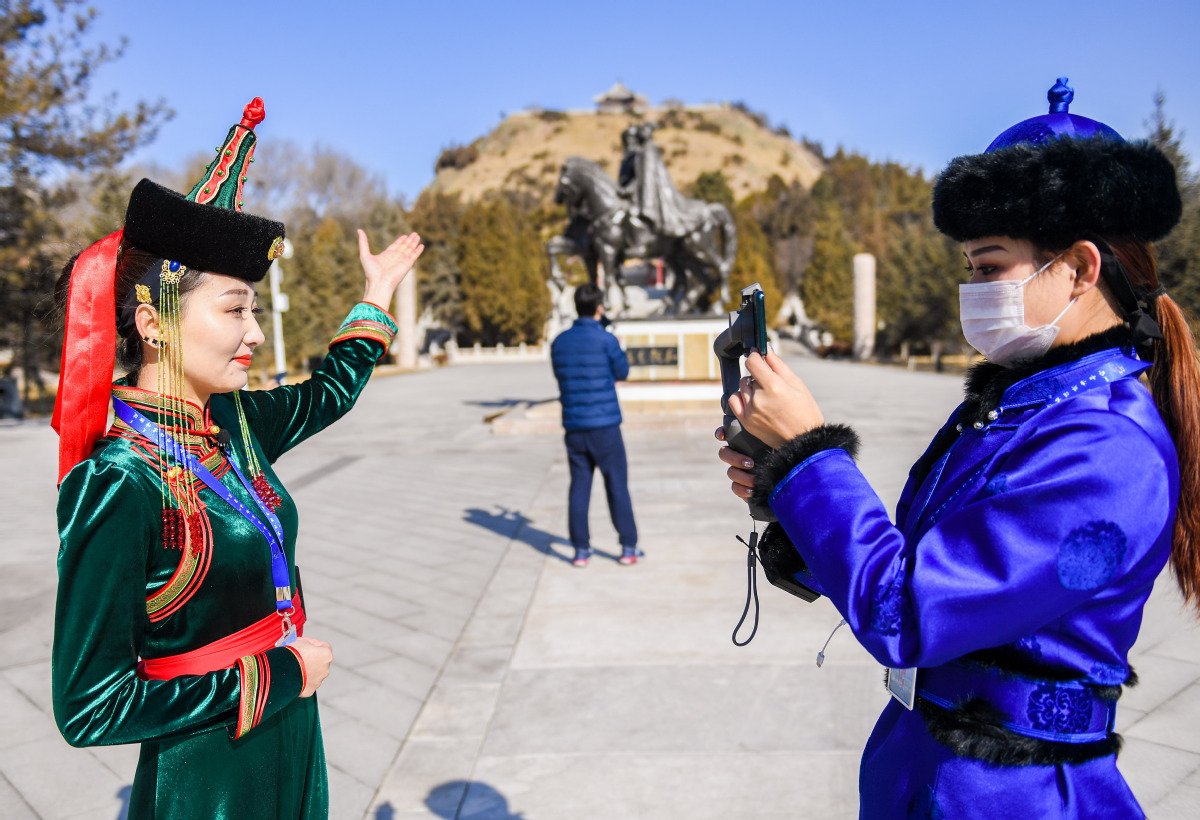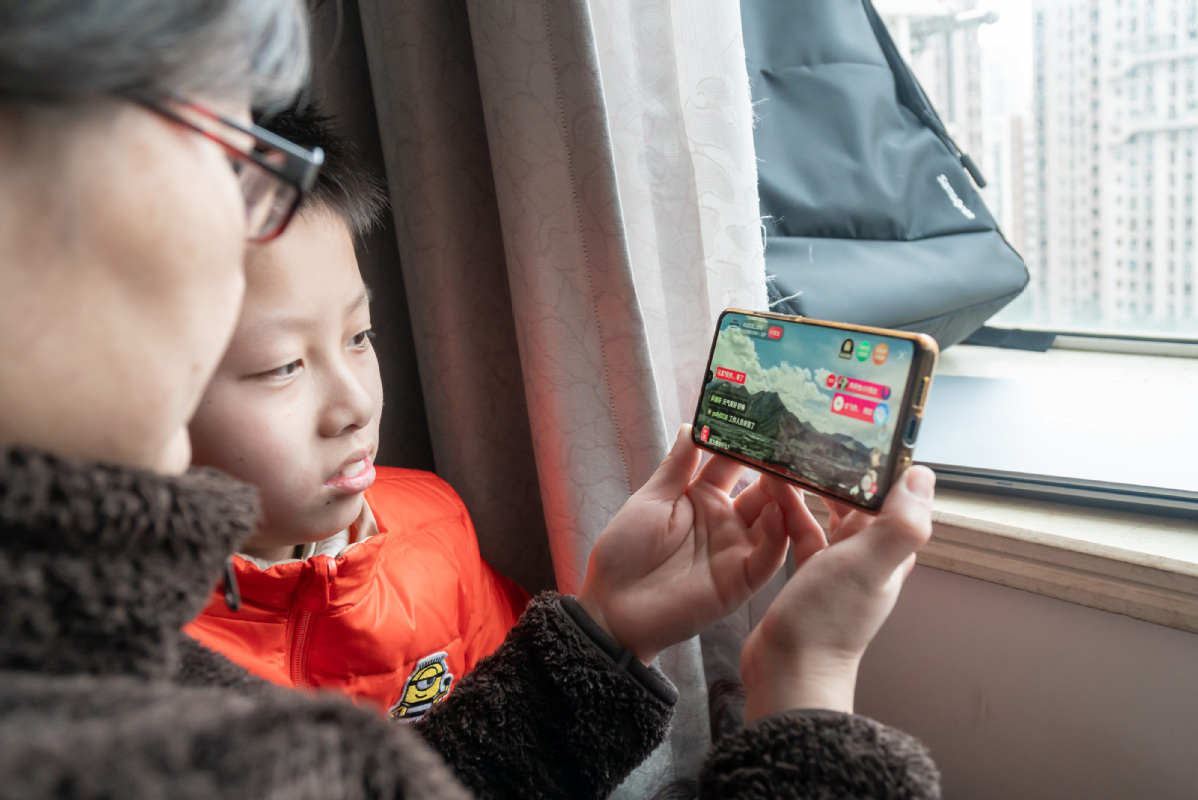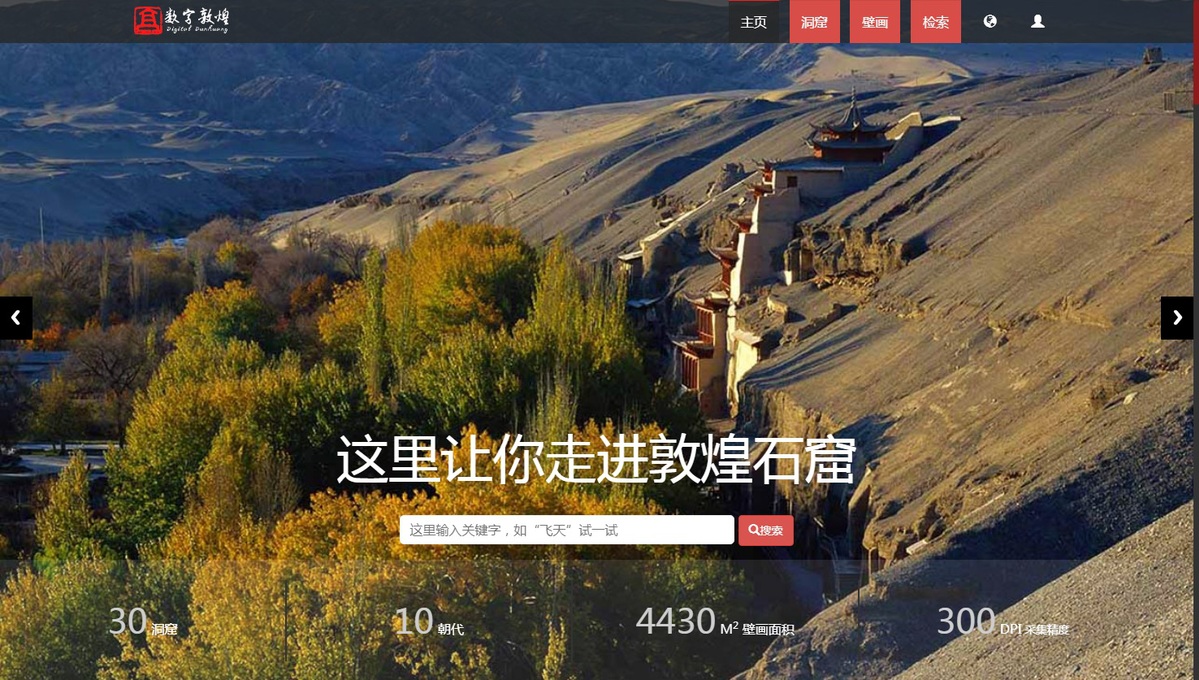
A Zhaojun Museum guide speaks to audiences through live 5G broadcast in Hohhot, capital of the Inner Mongolia autonomous region, on March 7. One million people were attracted to the scenic spot online. DING GENHOU/FOR CHINA DAILY
As a graphic designer, Liu Liangxian has always dreamed of visiting the Mogao Caves in Gansu province, where one of the world's greatest sites of Buddhist art has inspired generations of Chinese and foreign artists alike since ancient times.
"The art of Mogao serves as a cultural treasure hub for all of humanity. Coming face-to-face with its paintings and sculptures is something I must do at least once in my lifetime," the 42-year-old Beijing resident said.
But when the novel coronavirus outbreak began spreading nationwide earlier this year, Liu knew he had to put his plans to visit the UNESCO World Heritage Site on hold.
"I was planning to go to Mogao for an in-depth study of its cave art during the extended May holidays this year," Liu said.
"While I probably won't be able to make it now because of the measures to limit the impact of the COVID-19 epidemic, the ramped up online resources offered by the caves have been amazing. I can virtually see the art all for myself."
Liu is one of the many art aficionados benefiting from the efforts of cultural institutions and groups across the country-including heritage sites and museums, galleries and performance platforms-to continue offering artwork to the public, amid social distancing measures, through online innovations.
As the graphic designer discovered, the Mogao Caves near the historic Silk Road oasis of Dunhuang launched a "home travel" museum program involving a broad range of cultural organizations, stretching from eastern Zhejiang and southern Guangdong provinces to Liaoning province in the northeast. The program aims to promote and maintain public interest in art, heritage and relic conservation.
Mogao's major relics come from about 500 caves dating to the fourth century that cover the Tang and other epochal dynasties, with the importance of the murals, sculptures and writings extending far beyond their religious significance to place Dunhuang as a cultural icon for the world's great civilizations.

A guide conducts tours for viewers via 5G livestreaming at the Zhaojun Museum in Hohhot on March 7. DING GENHOU/FOR CHINA DAILY
The home travel program itself is the latest of the heritage site's digitization moves. More than 220 caves have been digitally archived through projects with international art organizations in previous decades, according to Wu Jian, director of the cultural relics digitization institute at the Dunhuang Academy, which manages and studies Dunhuang's revered artifacts.
The continued digitization of Mogao serves as a fitting complement to the physical experience of visiting the iconic destination, Wu said.
The National Art Museum of China also beefed up its online and digital viewings amid the outbreak, inviting the public to its exhibitions "without leaving home", it said.
The capital museum's virtual Chinese Painting segment in its Tribute To Donors exhibition alone displayed 175 works selected from more than 3,000 donations over the years.
The art stretched through ancient and modern times, including the major categories of landscapes, figures, flowers and birds, to showcase "the basic clues and general characteristics of the development history of ancient and modern Chinese painting", it said.
Taking stock of the digital trends that were already emerging even before communities bore the brunt of the epidemic, Qiu Zhijie, dean of the School of Experimental Art at the Central Academy of Fine Arts, said the confluence of art and technology is definitely growing.
"The history of art has always been about a long vein of artists using the latest scientific and technological achievements of their era to think about human art, technological progress and common development," Qiu said during an art forum in Beijing.
"We need to think about how we can continue to … humanize our technology so that it can really be used for our well-being."

A boy and his mother watch a live broadcast about the Potala Palace in Lhasa, capital of the Tibet autonomous region, from their Shanghai home on March 9. WANG GANG/FOR CHINA DAILY
The online cultural offerings amid the COVID-19 public health emergency covered many other creative spheres. One recent music festival, involving the Beijing Contemporary Art Foundation and drawing more than 70 leading figures from the arts, entertainment and literary fields, provided what event organizers said was much-needed support for family ties, social cohesion and cultural exchanges, in the face of psychological and other pressures brought about by dealing with the virus.
A piano piece by accomplished Japanese composer and music producer Ryuichi Sakamoto was a highlight of the event, which attracted about 23 million online hits and more than 6 million responses.
In his message to children, the Japanese composer said: "It must be hard not to be able to go out and play, but… use that time to read a lot of books and listen to a lot of music. Painting, writing poetry, playing musical instruments and watching movies aren't bad either.
"And don't forget to exercise at home. Let's do our best to get over these difficult times!"
Other art and music luminaries similarly pitched in with digital messages of encouragement and best wishes for families affected by the temporary suspension of classes and social activities.
"Many of life's details await our patience and multiple perspectives. We can use our time at home during this special period to communicate with ourselves, our family and space, through physical perception and exploration," choreographer Dai Lu said.
"Happiness can be found even in the darkest of times. If one only remembers to turn on the light," musician Zhang Jiadi said.

Visitors get to "walk inside" and explore the iconic Mogao Caves containing ancient Silk Road art, through the Digital Dunhuang online program. DIGITAL DUNHUANG SCREENSHOT
Home and beyond
Many people are beginning to venture outdoors again with springtime and Chinese authorities' headway in containing the coronavirus outbreak, but the comfort and ease of experiencing the virtual artworks and performances have hit home. Industry leaders believe the platforms' new popularity will continue to draw audiences beyond the anti-epidemic measures.
"Our family started viewing exhibits and visiting art institutions online because of the self-isolation measures," Beijing logistics executive Lin Jiayi said.
"But we actually began to get used to the convenience of doing all this from home. It's like the home-exercising, distance-learning and work-videoconferencing apps, all making various activities and tasks very accessible by going online," said Lin, 36.
"Of course, it's still good to get outdoors for some fresh air. But think of it as a nice option to stay indoors, for those rainy days or when we just simply want to."
Huang Rihan, executive director of the China Digital Economy Institute, said the latest developments in the digital economy are expected to continue post-epidemic, with major improvements and disruptions to multiple sectors across society.
"Through those e-platforms, goods and services are continuously being distributed … This is the position of China's digital economy. It has a huge effect not only domestically but also internationally, which is why it's important to strengthen its development," said Huang, speaking at an online forum that brought together major analysts from the public and private sector to discuss growing interest in the new digital infrastructures.
"The 'digital infrastructure' is very important now … science and technology are the primary productive forces. The digital economy can not only help China's real economy, but also enable its future economic development to fuel long-term momentum," Huang said.
Through major software and hardware applications in sectors ranging from education and entertainment to catering and communications, participants of the forum agreed that the digital economy is poised to take big strides in the changing landscape, powered by latest technologies at the workplace and within individuals' private space.
Wang Jian, professor at the University of International Business and Economics in Beijing, said many significant changes are in store for the Chinese economic model, with digital innovation expected to spearhead much of the advances in the business and services sectors.
"The internet and e-commerce have been developing in China for nearly 20 years. In past decades, China's economic development model has produced a very important change," he said.
"Many sectors are now carrying out a so-called digital transformation, and at the same time, we also see that the digital support platforms for markets are basically being perfected."
Applying digital developments to cover industries more fully, including small and medium-sized enterprises, and paying greater attention to the integration of payment systems and cybersecurity issues, will be some of the notable areas that need addressing going forward, Wang said.

